A Better Guide to Yellow, Stripey Things
Did you know? Maryland has over 1,200 documented wasp species, many of which are super tiny and exist around you without you realizing they are there.
I have spent the last 20 years working with wildlife and unlearning a lot of harmful stereotypes I grew up with (snakes are dangerous/spider bites cause major medical issues/ wasps are @holes, etc). I now give talks on these misunderstood groups of animals and bust myths associated with them while also providing fun facts about these animals and why we should care. I have found spending time watching wildlife from a respectful distance can really help in understanding their behaviors.
Over the last 10 years or so, I have spent more time around entomologists and have learned so much that I missed about Hymenoptera (bees, wasps, and ants). Being around people who are passionate about wasps and extol the services wasps provide has really helped me understand why they do things like sting you (and why it hurts so bad!).
I often see graphics of ‘yellow, stripey things’ float around on the internet that idolize non-native European honeybees and give wasps a bad portrait. So, I created my own set of graphics in hopes of dispelling some myths.
Please note- some of these graphics generalize large groups of organisms. So, it’s hard to get all of the info in one short graphic.
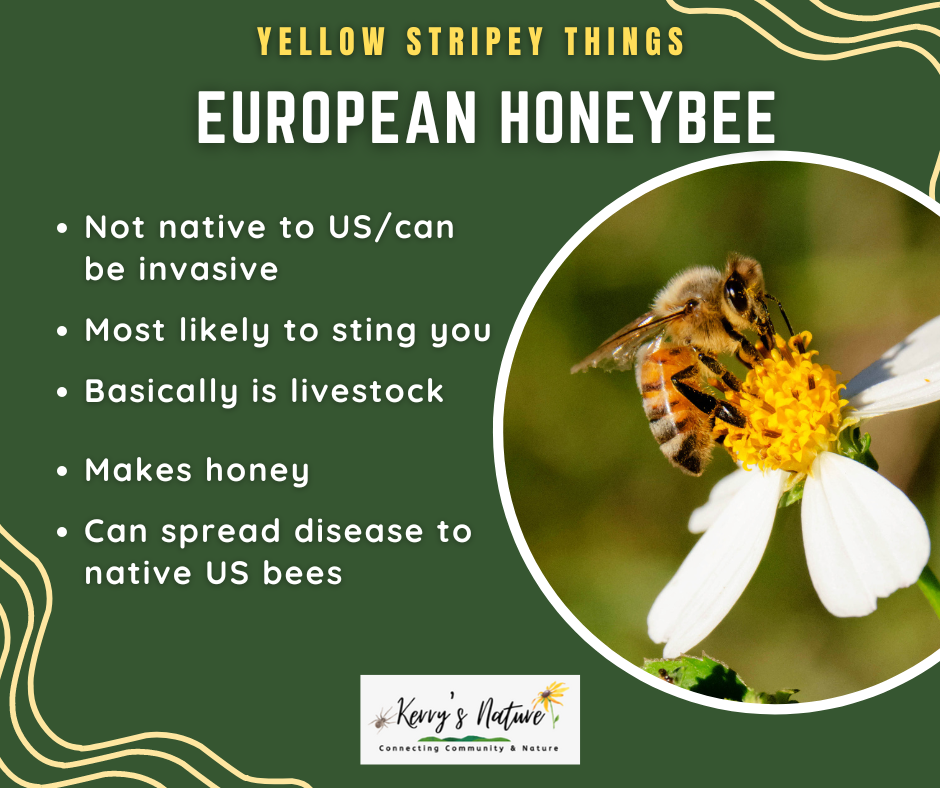
The #SavetheBees campaigns often focus on this species which is not native to our area and also the one most likely to sting you. Feral honeybee colonies can also be detrimental to struggling native bees as they compete for resources and spread disease. Honeybees have their place in our agriculture systems much like chickens do, but that place doesn’t extend to our natural areas.
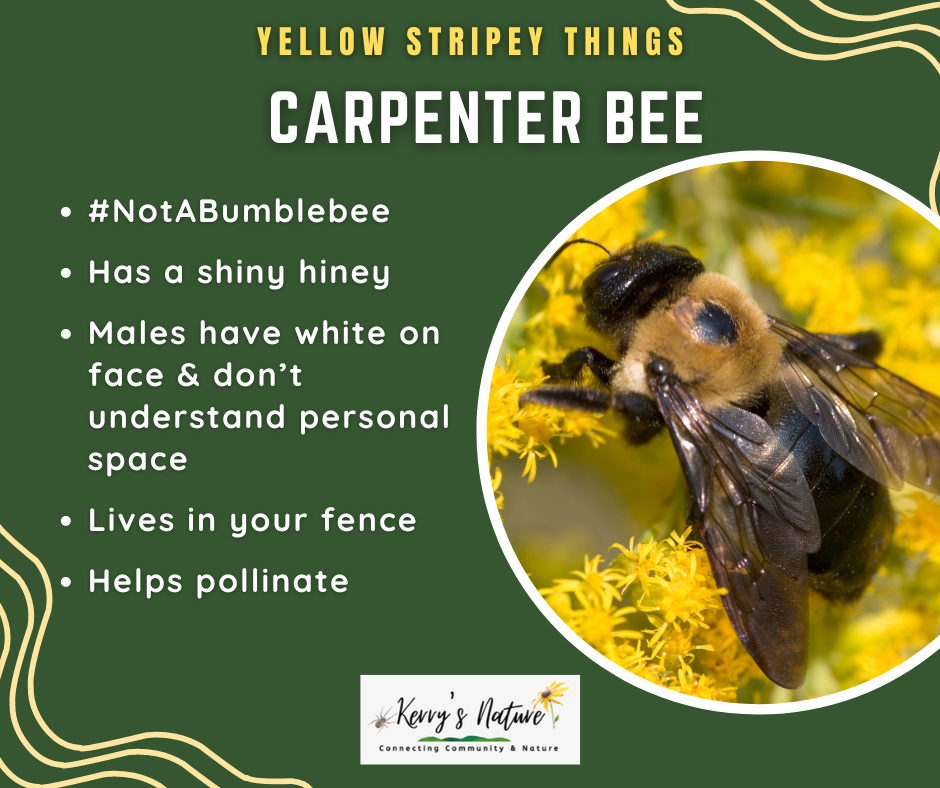
Often confused for bumblebees, carpenter bees are actually in a whole other group. They lack fuzzy butts like actual bumblebees and are are some of the few bees that can actually make their own tunnel nests in wood. (Most other tunnel nesting bee species have weak jaws that can only get them through rotting wood/thin plant stems).

Bumble bees often nest in the ground in former rodent tunnels and can attack if they feel threatened. Their sting isn’t as potent as social wasps like yellow jackets, but they can let you know when they are uncomfortable. There are 15 species of bumble bees that have been documented in Maryland with the Common Eastern Bumble Bee being the one sighted the most.
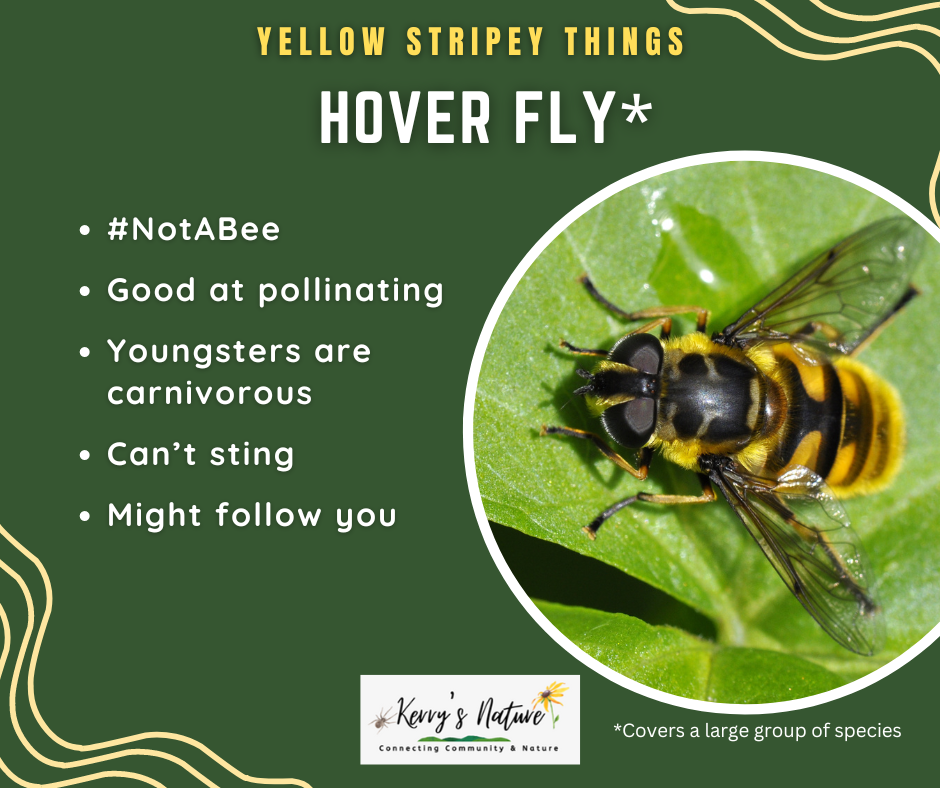
Hover flies are master mimics. They can be really effective pollinators, and their larvae (maggots) will munch on all sorts of soft-bodied insects like aphids. Over 150 species of hover flies aka syrphid flies have been found in Maryland. One of my first encounters with their voracious larvae was when I photographed one chowing down on oleander aphids in my garden.
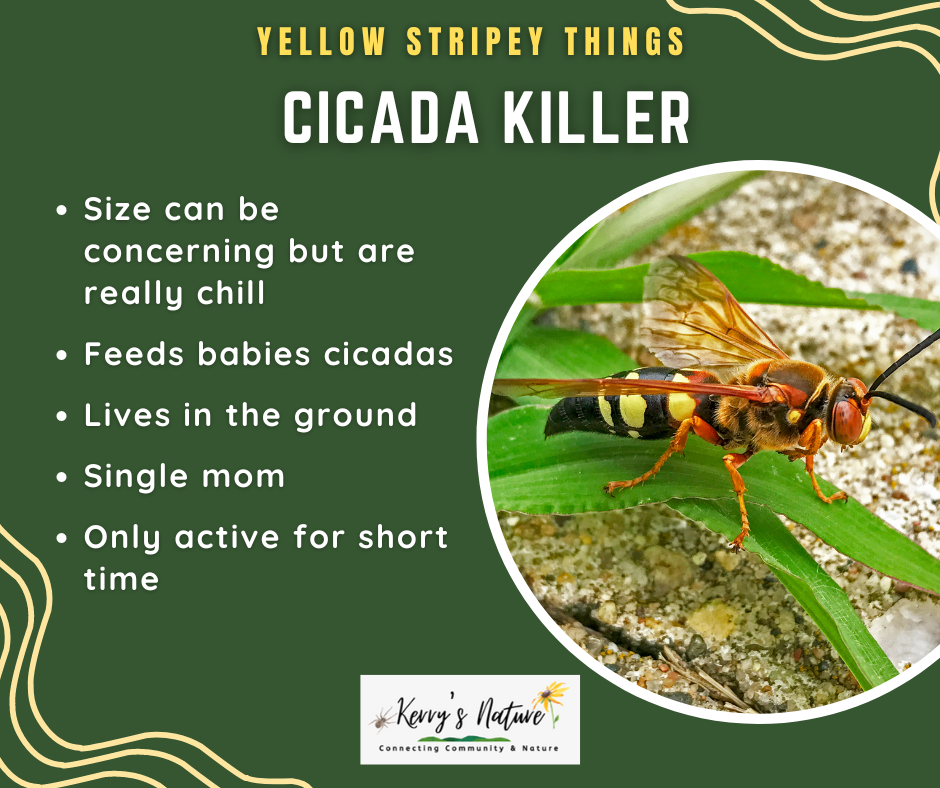
These summer wasps are large and seemingly in-charge. However, they really only want one thing: cicadas to feed their young. (The adults consume nectar for themselves). Females have the ability to sting but rarely do so unless significantly threatened. Longwood Gardens has a colony on their property with educational signage.
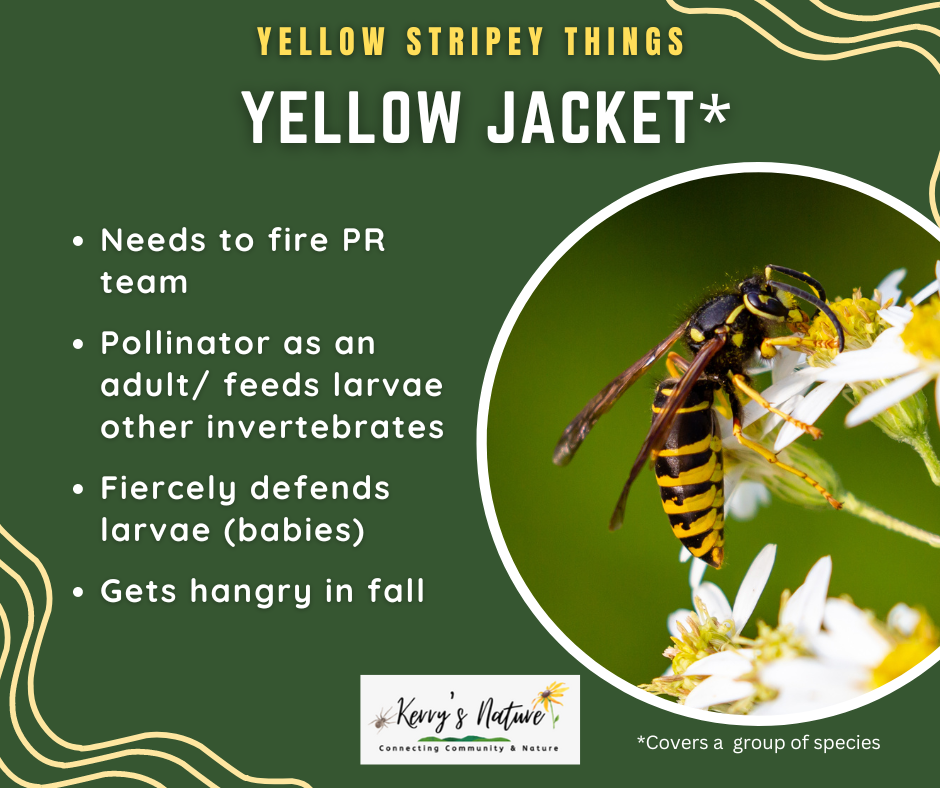
There are quite a few yellow jacket species in our area. Bald-faced hornets are actually aerial yellow jackets. Yellow jackets, as adults, are pollinators and they hunt for invertebrates to feed their young. They get really angsty if you get near their nest. However, if you can give them the space they need, they can help with a lot of pest control. Yellow jackets work hard for their colonies throughout the growing season, but in the fall, the nest has been completed and the young are all grown up. Food resources become scarce in the fall, so the workers are essentially jobless and hungry, resulting in irritable wasp syndrome. They seek out high carb foods (who doesn’t) and Labor Day cookouts are a prime feasting spot.
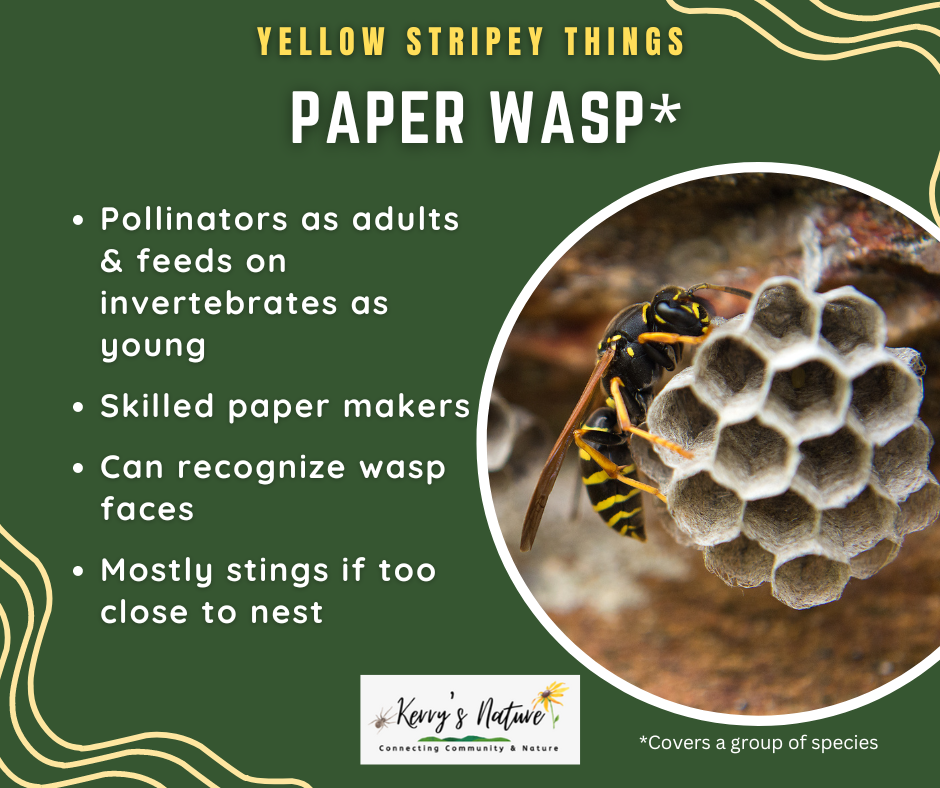
Paper wasps come in a lot of colors and sizes. There are at least 10 species of paper wasps in Maryland. The most aggressive in our area are the non-native European paper wasps which are large and brightly yellow and black striped. As social wasps, it behooves them to learn each other’s faces, and researchers have found that not only can some paper wasps recognize faces but also the ones that do cooperate more and are smarter.
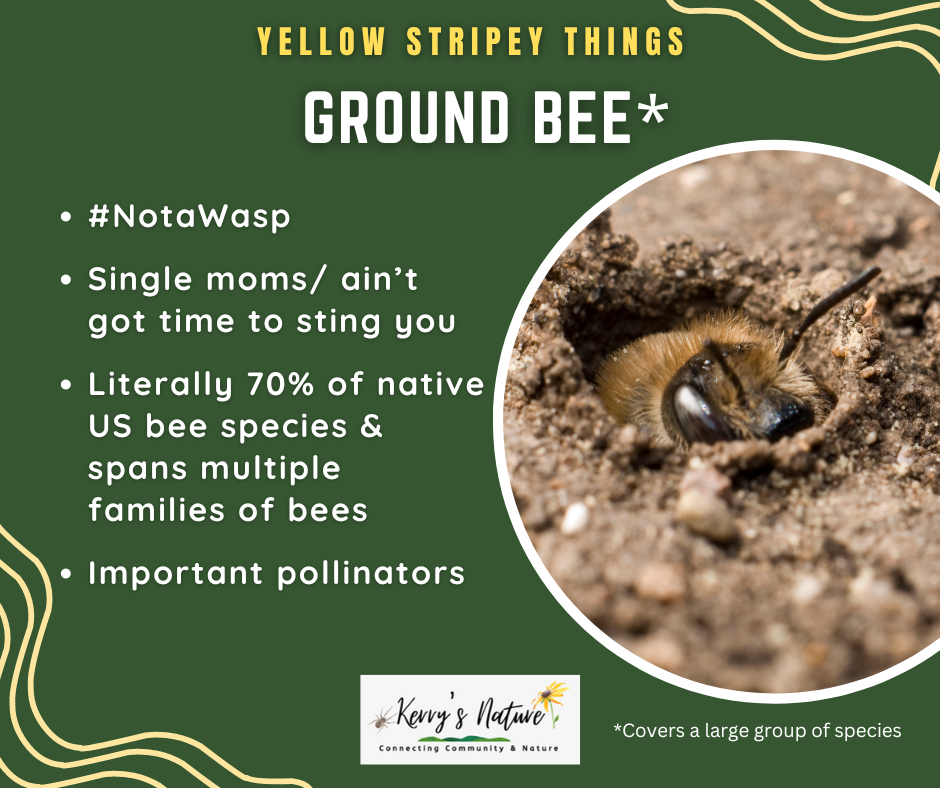
A social wasp colony in the ground will have one main entrance and multiple wasps coming in and out. A ground bee colony will have multiple holes with a single female coming in and out of each hole. (They technically are solitary nesters but will aggregate if the right conditions exist). It is estimated anywhere from 70-80% of our native bee species in the US nest in ground. A recent project also used X-rays to view some of these fascinating structures. Squash bees and blueberry bees nest in the ground.
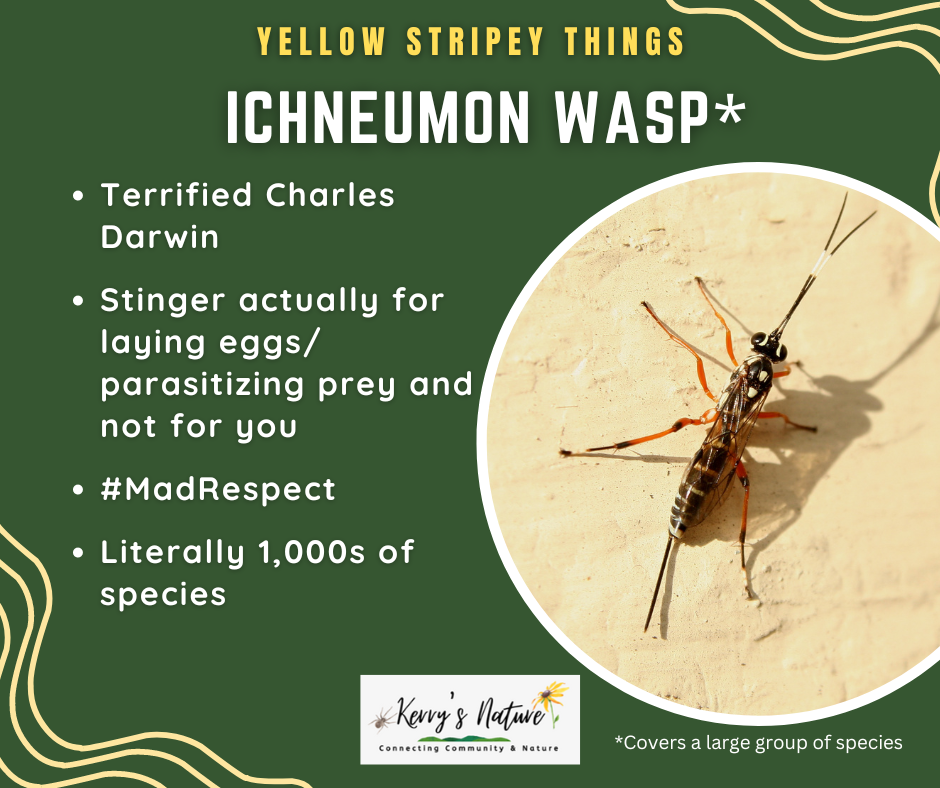
Charles Darwin once wrote to Asa Gray (prominent NA botanist): “I cannot persuade myself that a beneficent and omnipotent God would have designedly created the Ichneumonidae [a family of parasitoid wasps] with the express intention of their feeding within the living bodies of caterpillars.” These wasps are a large group. Some our tiny like a mosquito while others like the giant ichneumon can have a 4-5 inch ovipositor (designed to drill through wood to find pigeon tremex). They do A LOT of pest control.
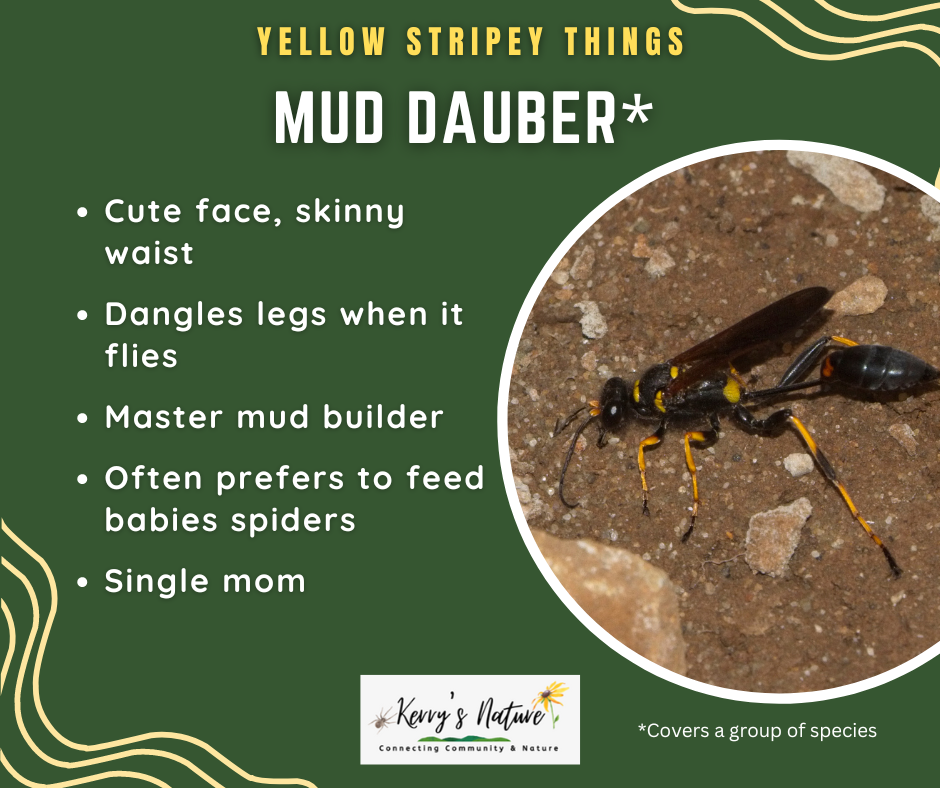
Mud daubers are a large group and come in lots of different colors and sizes. They parasitize a number of invertebrates, including spiders. The blue mud wasp, in particular, is known to have a propensity for black widow spiders.
Monica Cortada
Excellent blog! Thanks for posting.
Ginny Klocko
Fabulous resource guide that will be kept for reference. Thank you!!
Bruce Kelley
As Kids, we all thought you were a goner if stung by a Cicada Killer. Yikes!
Thanks, KW.